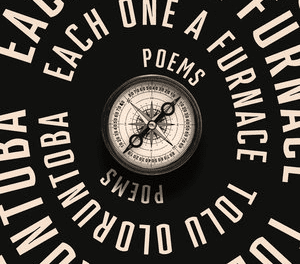 Spring Break is at an end, and it’s great to be back in the office. The staff at CR is so devoted, so focused, so . . . fused to the rewarding work of bringing you lit that buzzes your bulbs, we tend to feel a bit lost when we don’t have submissions to read, proofs to mark, accepted material to edit. In other words, Becky Adnot-Haynes spent the break rocking back and forth in a dark room, muttering to herself in past-perfect tense. Lisa Ampleman took cuticle care to new heights. Brian Trapp swallowed eggs. Whole. Lots of them. Just to see what would happen. Now he knows. Matt O’Keefe practiced writing the ampersand, which he’d never before mastered. It’s tricky, the ampersand. Nicola Mason rolled in a bed of poison ivy. Just to see what would happen. Now she knows. Linwood Rumney trumped all our efforts by scouring the sidewalks of our city for $1000 bills. He found one. Unfortunately that’s exactly what he owed his bookie, so now he’s broke again, but he gets to keep all his digits, which he put to good use in typing up the following assessment of Matt Sumpter’s poem in our upcoming (May) issue.
Spring Break is at an end, and it’s great to be back in the office. The staff at CR is so devoted, so focused, so . . . fused to the rewarding work of bringing you lit that buzzes your bulbs, we tend to feel a bit lost when we don’t have submissions to read, proofs to mark, accepted material to edit. In other words, Becky Adnot-Haynes spent the break rocking back and forth in a dark room, muttering to herself in past-perfect tense. Lisa Ampleman took cuticle care to new heights. Brian Trapp swallowed eggs. Whole. Lots of them. Just to see what would happen. Now he knows. Matt O’Keefe practiced writing the ampersand, which he’d never before mastered. It’s tricky, the ampersand. Nicola Mason rolled in a bed of poison ivy. Just to see what would happen. Now she knows. Linwood Rumney trumped all our efforts by scouring the sidewalks of our city for $1000 bills. He found one. Unfortunately that’s exactly what he owed his bookie, so now he’s broke again, but he gets to keep all his digits, which he put to good use in typing up the following assessment of Matt Sumpter’s poem in our upcoming (May) issue.
 Linwood Rumney: For a poetry lover, finding a good sonnet is like spotting a $1000 bill on the sidewalk. After the surprise of discovering something you thought no longer existed wanes—“They print these?” you ask yourself in disbelief—everything feels brighter, and all the problems that seemed overwhelming don’t feel so insurmountable.
Linwood Rumney: For a poetry lover, finding a good sonnet is like spotting a $1000 bill on the sidewalk. After the surprise of discovering something you thought no longer existed wanes—“They print these?” you ask yourself in disbelief—everything feels brighter, and all the problems that seemed overwhelming don’t feel so insurmountable.
That’s what it was like when I first read Matt Sumpter’s “Mold House”: I unexpectedly felt a lot richer. “Mold House” is by no means a pure sonnet; it’s fifteen lines instead of fourteen, and while most of the lines do have five stresses, it clearly maintains no strict allegiance to iambic pentameter. The poem is shabby, and appropriately so. This sense of clutter, as with the exhumed contents of the house demolished in the poem, the rollerblades and mattresses, creates opportunities for genuine surprise. The poem contains no pure rhymes, for example, yet the last words still sonically resonate in intricate ways: the off-rhymes of “hammers” and “ladders”; the assonance of “edge,” “instead,” and “mattresses”; the alliteration of “rugs” and “rescue.”
So, “Mold House” is a great poem in part because the form and the content complement each other, working together to determine the direction of the piece instead of wrestling each other for supremacy. Though I love “Mold House” in part because it is a sonnet, I enjoy it all the more because it does not overtly call attention to its sonnet-ness. The poet cares more about the men “pry(ing) shingles off with claw hammers,” the sounds and cadences he can find there, than he does about patting himself on the back for accomplishing a formal feat. A reader can really be struck by the rhythms, the energy, and the atmosphere of the poem without really recognizing the intricacies of its formal features.










